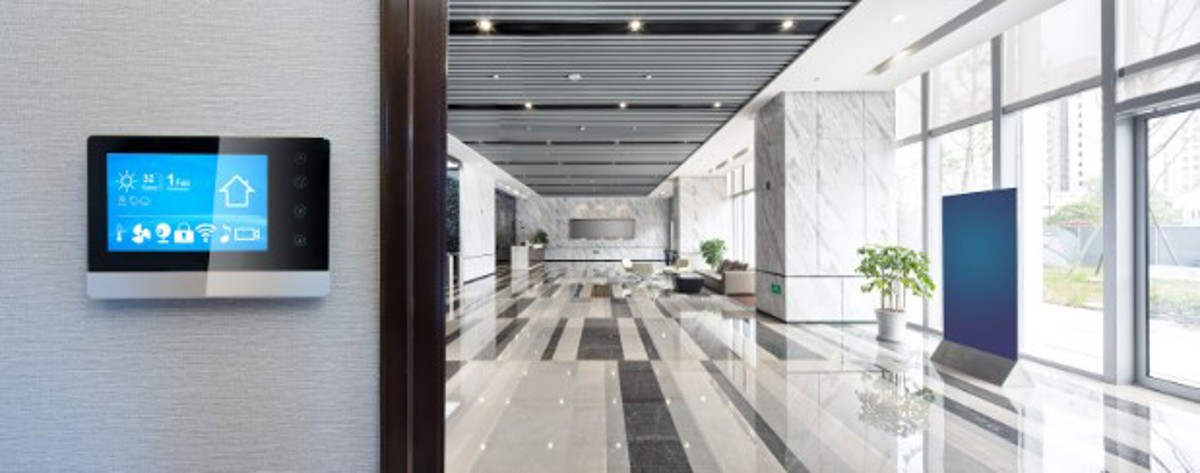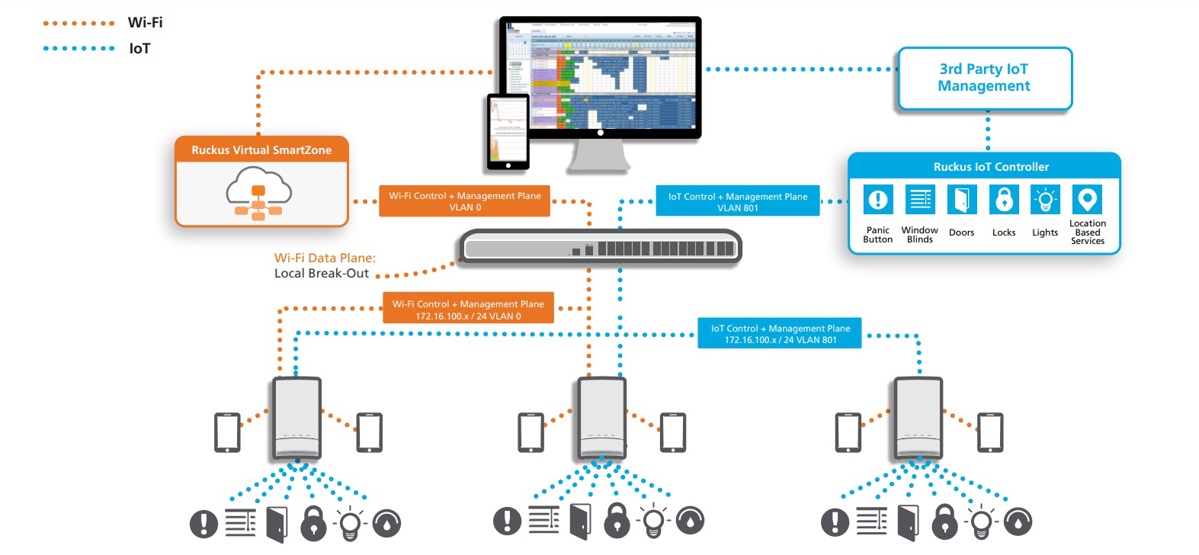Smart Building Network Architecture
Smart building network architecture refers to a structured framework of interconnected devices and sensors that help optimize facility performance via automated and remote functions for building-wide systems like lighting, security, or HVAC. The network infrastructure collects and analyzes data on temperature, energy consumption, and occupancy. Users can apply these insights to improve energy and save costs through monitoring, control, and automation.
Effective smart building network architecture prioritizes interoperability, scalability, security, and reliability to support the diverse requirements of modern buildings and facilitate the seamless integration of new technologies and services. The architecture typically has several layers, as described in the table below.

| WAV’s team of experts can help you choose the best design and equipment for your smart building networking project. |
| Contact Us |
| Smart Building Network Architecture | |
|---|---|
| Layer | Description |
| Physical Layer | Physical devices and sensors deployed throughout the building include occupancy sensors, temperature sensors, actuators, and controllers. |
| Network Layer | This layer facilitates the transmission of data collected by sensors and devices to the central processing unit. It may include wired (Ethernet) or wireless (Wi-Fi, Zigbee, Bluetooth) networks. |
| Data Processing Layer | Entails the processing, storage, and analysis of data collected from sensors and devices. It may include edge computing devices, gateways, and local servers for real-time analysis and decision-making. |
| Application Layer | The application layer comprises software applications and interfaces that enable users to monitor, control, and optimize building systems. It includes building management systems, energy management systems, and user interfaces (web portals, mobile apps). |
This table provides a basic overview of the layers involved in smart building network architecture. Reading the details in successive rows also illustrates how data flows in a similar progression from physical devices to the application layer, where it is utilized for building management and optimization. Let’s take a more detailed look below at the network layer.
Smart Building Network Architecture: Wireless Components
The smart building network layer relies on various wired and wireless components to enable connectivity and communication between multiple devices and systems within a building. Some of the critical wireless components commonly found in a smart building network include:

- Cellular Connectivity. In some cases, smart building devices may use cellular connectivity (like 4G or 5G) as a backup or primary communication method, especially in areas where wired internet connections are unavailable or unreliable.
- Mesh Networks. Mesh networking technology enables devices to communicate with each other directly or through intermediate devices, forming a self-healing network that can extend the coverage area and improve reliability. Mesh networks are often used in smart buildings to enhance wireless coverage and resilience.
- Bluetooth. Often used for short-range wireless communication between devices within a building, Bluetooth technology is commonly used for connecting devices like smartphones, tablets, and IoT sensors to the building's network for data exchange and control.
- Wi-Fi Access Points. Essential for providing wireless Internet connectivity to devices within the building, Wi-Fi access points distribute the wireless signal throughout the building, allowing devices to connect and access the Internet and other network resources.
- Near Field Communication (NFC). NFC is a short-range wireless technology that enables contactless communication between devices when brought into proximity. It's commonly used for access control systems, payment systems, and interactive displays in smart buildings.
- Zigbee. Zigbee is a low-power, low-data-rate wireless communication protocol commonly used in smart building applications. It's ideal for connecting various sensors, actuators, and other IoT devices within a building for environmental monitoring, lighting control, and energy management.
- Radio-Frequency Identification (RFID). RFID technology uses electromagnetic fields to identify and track tags attached to objects automatically. RFID tags can be used in smart buildings for asset tracking, inventory management, and access control.
These wireless components work together to create a robust and interconnected network infrastructure that supports various smart building applications, including energy management, security, environmental monitoring, and occupant comfort.
WAV, RUCKUS Have Cutting-Edge Smart Building Technology
WAV is a trusted partner of CommScope RUCKUS, which makes industry-leading wireless equipment for smart building network architecture. With RUCKUS IoT Suite, organizations can create an IoT access network that accelerates IoT deployments, cuts costs, and boosts the benefits from IoT devices.
A RUCKUS IoT network enables organizations to aggregate and backhaul IoT traffic over their new or existing Wi-Fi infrastructure. In addition, RUCKUS Networks can create a converged edge network that unifies wireless, wired, and IoT networks within a shared network architecture.


